Doubled Die Class 1
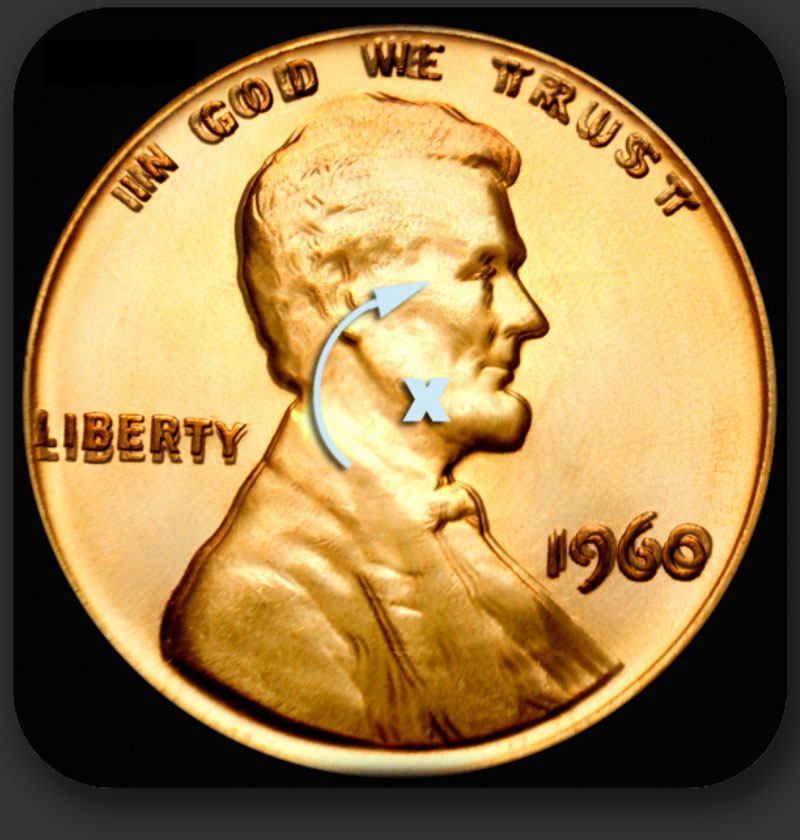
Doubled Dies:
Class I (Rotated Hub Doubling):
Probably the easiest to conceptualize and diagnose; it is an example of two separate hubbings, where the second hubbing has been rotated in relation to the first hubbing at or near the center point of the die.
Class I Doubled Dies are listed as being clockwise (CW) or counter-clockwise (CCW) which pertains the order of lightest hubbing to the deepest hubbing; the second, deeper hubbing is typically regarded as, but may not necessarily be, the second hubbing, just the clearer of the two.
Doubling is typically found to be rounded, with notching, showing separation lines and extra thickness.

Above is a overlay diagram of a fictitious Class I Doubled Die that has a CW rotated spread similar to the King of Doubled Dies, the 1955P DDO-001. Notice how the spread is equal on all devices and increases further out from the center of the coin.
Below are photos of 1972P DDO-001, a Class I DDO with a strong CW spread on all outside devices and parts of the jacket. Due to the way a second hubbing eliminates parts of the design impressed from the first hubbing, doubling typically only shows in areas that remain open in the new orientation of the die, thus, only the outside elements of the portrait of Lincoln and the motto show doubling while the center points are lost to the second hubbing.
Hubbings are ordered from lightest to deepest, either CW or CCW. You can see on the lighter of the two hubbings G (1.) was entered along with the rest of the design, the deeper hubbing G (2.) is oriented CW to the first and is often regarded as the second hubbing, but that cannot be proven.
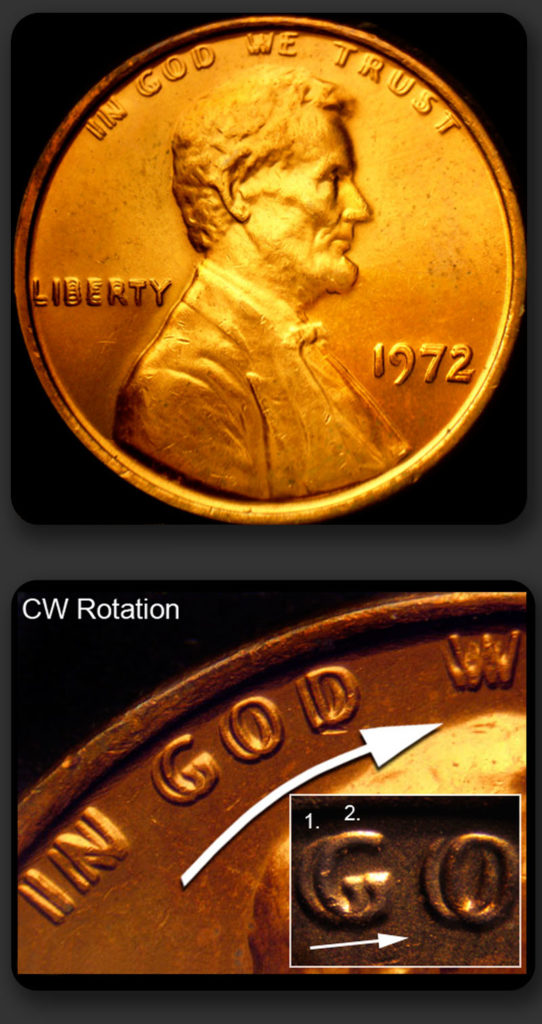
Below you can see clear separation between the letters in the motto. Also below is distinctive notching on the upper and lower serifs of the date (the 1 is highlighted).
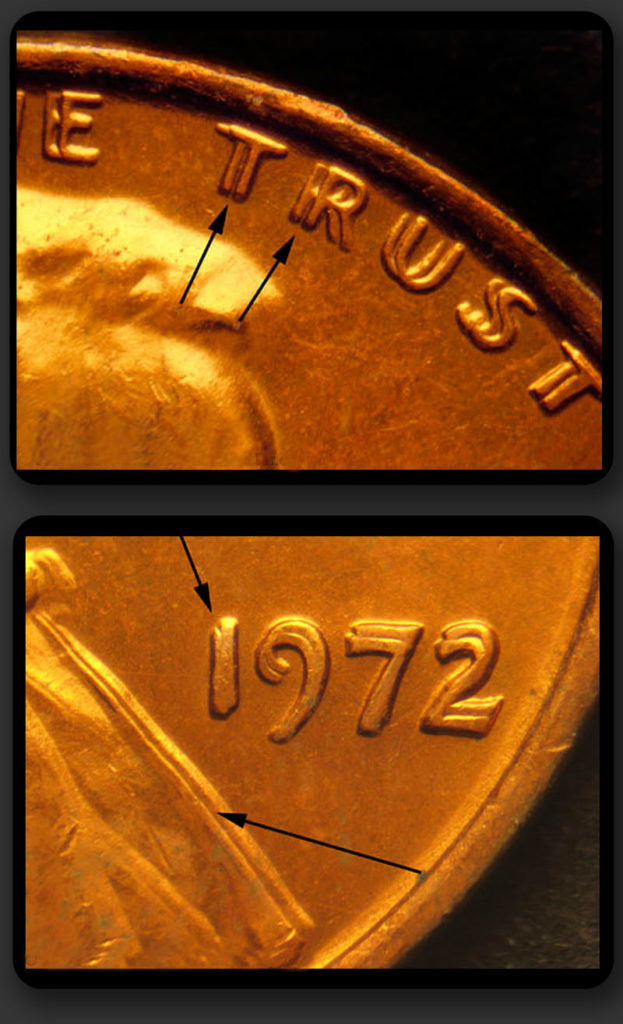
Below is a Class I Doubled Die on the reverse, listed as 1964P DDR-001, it shows a CCW spread. Again there is clear separation, notches and rounded doubling – it is strongest in STATES and of. Notice that while all devices show some doubling, the upper motto is the strongest, this is due to the pivot point between hubbings, while near the center, being located over the steps rather than the absolute middle of the die.
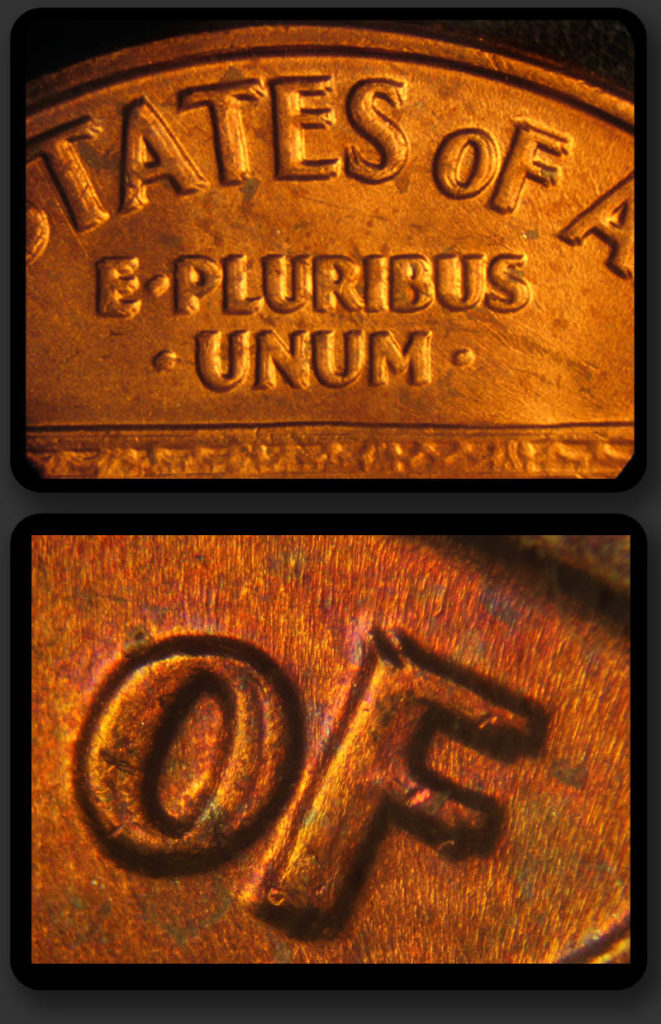
The next example is on a 1972 Colombian 20 Centavos. Here we se a nice CCW spread that shows across the motto, date and parts of the portrait.
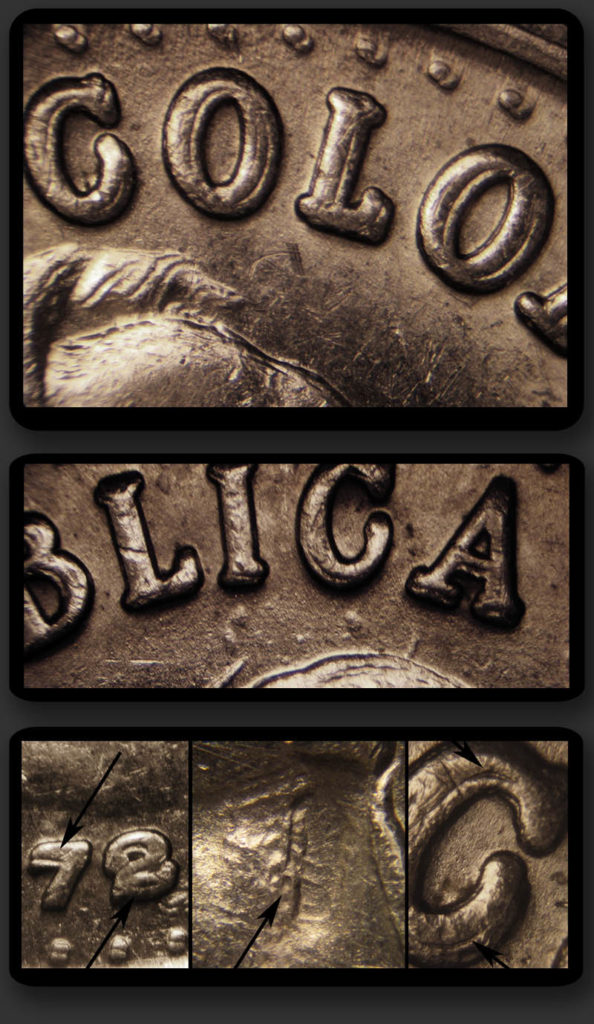
A notch from hub doubling is the product of overlapping parts of a device that drop off in relation to one another. Notches are most often seen at corners and with serifs. Above is 1934D 25¢ lised as DDO-001 and shows very obvious stepped notching.
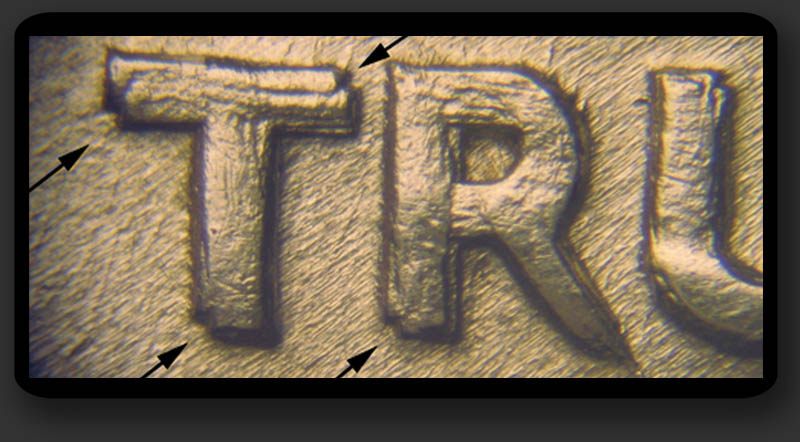
NOTCHES EXPLAINED:
Now for example, if a die shows hub doubling and there is a geographic shift in relation to the rotation (north, south, east or west), the notches will be more apparent. The proceeding illustrations show a hypothetical CCW rotation with the Red being the first hubbing and the Green the second – the green is also slightly south (or down in relation to the red). While the spread is minor, the notches are obvious as the drop offs are throughout much of the doubling. Even the round parts (like the o and S) show an ellipse that ever so gently comes inward as opposed to straight lines that would be seen with Machine Doubling.
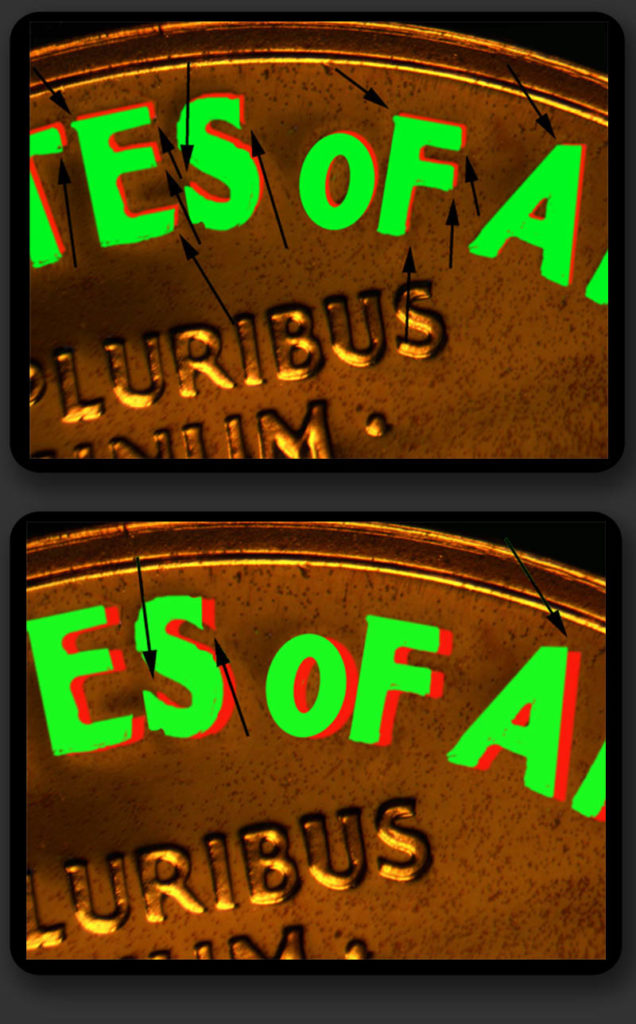
Now we will see a stronger CCW spread that does not show a significant geographic change in position, the result is fewer notches, but where the design drops off, such as the serifs on the S or the top of the A, there will be minor notching or splits seen.
Below are some notching diagrams to give one an idea of where (and the variety of places) Class I (and also Class V) hub doubling can produce notches.

Below are examles of Class I Doubled Dies on various Lincoln cents.
1941 DDO-001
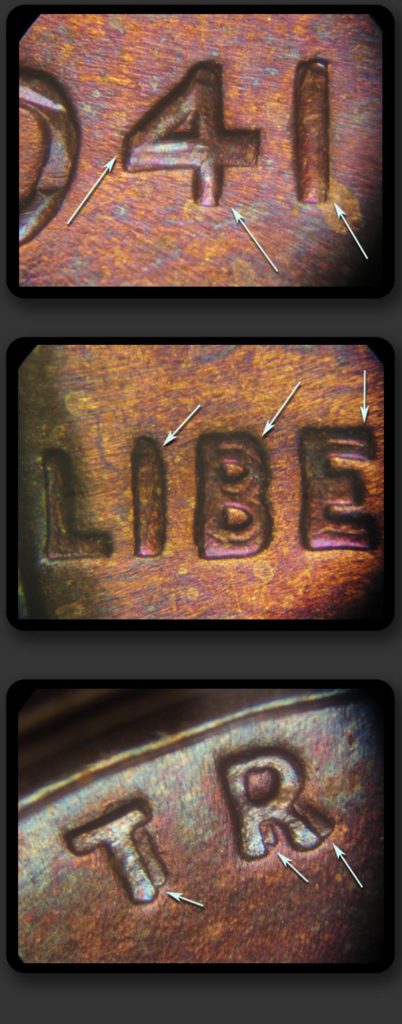
1941 DDO-002
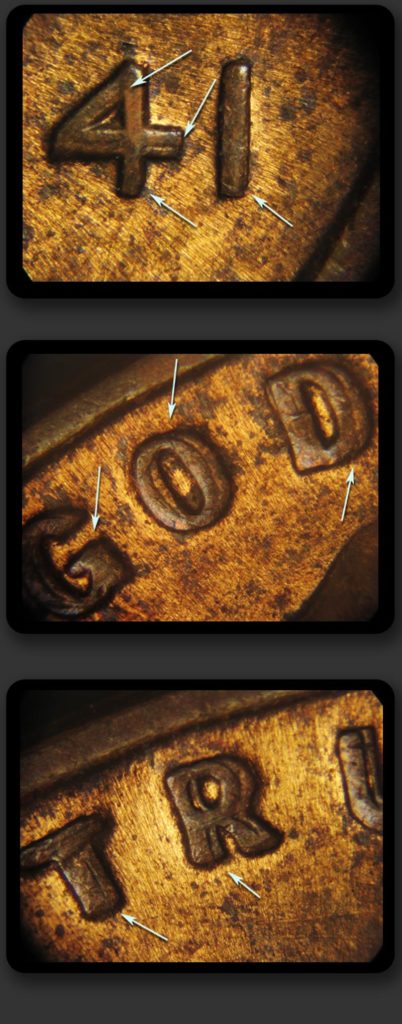
1936 DDO-001
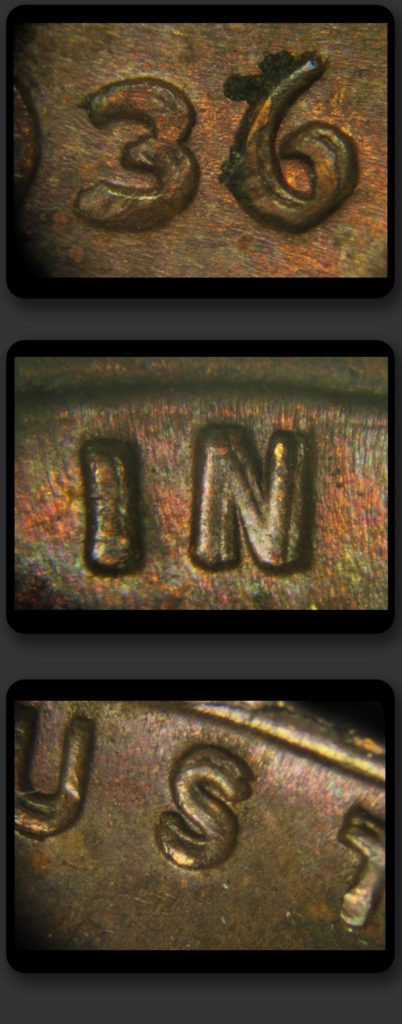
1971 DDO-002
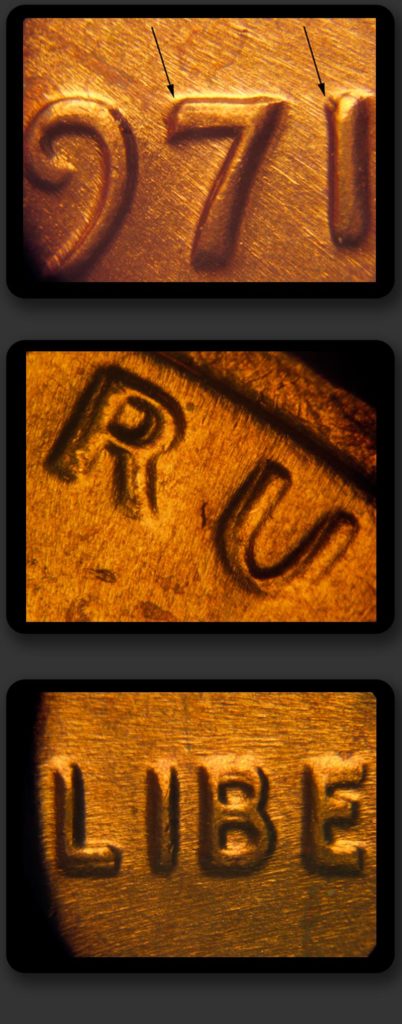
Class 1, Rotated
A class I doubled die results when the die receives an additional hubbing that is misaligned in a clockwise or counterclockwise direction.
Class 2, Distorted
A class 2 doubled die results when the hub’s design moves toward the rim between hubbings.
Class 3, Design
A class 3 doubled die results when a hub bearing a different design stamps a die bearing another design.
Class 4, Offset
A class 4 doubled die results when the die receives an additional hubbing that is misaligned in an offset direction.
Class 5, Pivoted
A class 5 doubled die results when the die receives an additional hubbing that was misaligned via rotation with a pivot point near the rim.
Class 6, Distended
A class 6 doubled die results when the die receives an additional hubbing from a hub that was distended.
Class 7, Modified
A class 7 doubled die results when the hub is modified between the die’s hubbings (e.g., a design element was chiseled off).
Class 8, Tilted
A class 8 doubled die results when a die and/or hub is tilted during a hubbing.
